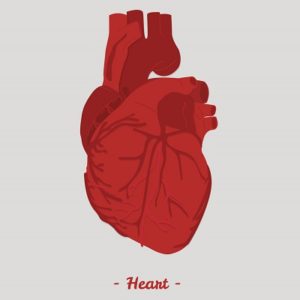 Doctors spend many hours educating patients about prevention of heart disease in both men and women. Understanding how to prevent heart diseases often gives you clues as to the warning symptoms of coronary heart disease.
Doctors spend many hours educating patients about prevention of heart disease in both men and women. Understanding how to prevent heart diseases often gives you clues as to the warning symptoms of coronary heart disease.
Coronary artery disease, also called coronary heart disease, has specific signs and symptoms, which are warnings of the increased risk of a future heart attack.
Angina is a specific type of chest pain that is a symptom of coronary heart disease in both men and women. Men appear to complain of angina more than women but this condition exists in both genders.
Angina happens when there is not enough flow of blood through the blood vessels of the heart muscle. This deprives the heart of life sustaining oxygen and causes the muscle to react in pain.
This might be peripherally compared to running a long distance under conditions where your legs don’t receive enough oxygen. The next day you’ll have very sore legs from the build up of lactic acid. In the heart muscle the reaction is much more immediate to the lack of oxygen and you’ll feel pain in your chest.
Angina has three major forms. Stable angina is predictable and is relieved by nitroglycerin. Unstable angina increases in frequency and duration and Prinzmetal’s angina is unpredictable and caused from spasms in the arterial system surrounding the heart.
The intensity of angina is different from person to person. The pain can be typical or atypical. Typical chest pain from lack of oxygen to the heart is experienced under the sternum and the patient feels like there is something heavy on their chest or that the chest is being squeezed. The patient experiences angina after exercise or increased emotion.
When patients are experiencing angina pain, and describing it, they often rub their chest or their left upper arm. It can be accompanied by nausea, vomiting, fainting or sweating. Prior to feeling the angina the patient may have been exercising, experiencing intense emotions, or have eaten a large meal.
Symptoms of coronary heart disease that are atypical can be located in the left chest, stomach, arm or back. This type of pain is not generally related to exercise and isn’t relieved by rest or nitroglycerin.
Another symptom of coronary heart disease is shortness of breath. This is usually a symptom of congestive heart failure but can also indicate a problem with other heart conditions. In congestive heart failure the heart is weak from a long-term lack of blood and oxygen or from a recent heart attack.
In some severe cases the first symptom of coronary hart disease is a heart attack. If the arteries that feed the heart are narrowed then a small blood clot or atherosclerotic plaque can completely block the artery and cause a heart attack.
This is why preventative screening for heart disease is so important to the health and wellness of both men and women. When the first symptom of coronary heart disease is pain from lack of oxygen to the heart muscle the condition has already advanced to a significant degree.
Using preventative screenings and heart healthy lifestyles both men and women are able to prevent or delay the onset of coronary heart disease which may limit their daily activities.
RESOURCES
Cleveland Clinic: Symptoms of Coronary Artery Disease
MayoClinic: Coronary Artery Disease
National Heart Lung and Blood Institute: What are the signs and Symptoms of Coronary Heart Disease
National Heart Lung and Blood Institute: What is Coronary Heart disease






